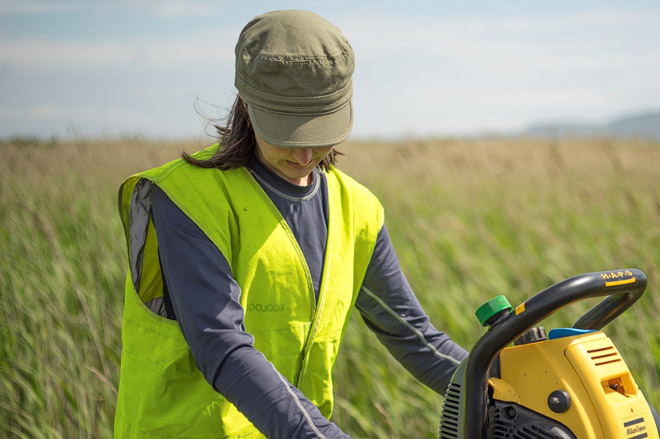

Ecohydrology. How hard can it be?

August 29, 2014
My name is Aoife, and I am studying for a PhD at Trinity College Dublin. I will be blogging about my experience of interdisciplinary research and the PhD experience in general.
My project started out as an idea in early 2013, when I was working on a contract to monitor sand dune habitats. I noticed that we lacked information on both the hydrology and fauna of dune wetlands, or dune slacks. I took the seed of an idea to some academics who I admired and soon there were proposals, business cases and approaches to funding bodies until last September I went back to college to study ecohydrology of dune slacks. Having put together the proposal and pushed for funding myself, I am privileged to have ample rope to hang myself.
When we plan our PhDs, we really don’t know that much about our subject – otherwise why do a PhD in it, right? So it should not come as a surprise that I underestimated the technical challenges of hydrogeological investigation. Who knew how hard it would be to put a hole in the ground and see how high the water was? Not me, with my botany degree and years in ecological consultancy. Drilling is pricey, sand makes things awkward, there is a danger of salt corroding equipment – generally the whole business was beyond both my budget and my expertise. So what to do?
I did what does not come naturally, and asked for help. I hinted, I begged, I bargained and I cajoled a variety of people and organisations. The result? Unexpected and unimaginable generosity. People have given me time, expertise, money and equipment to the point where I will have more wells than I initially hoped for and actually have to turn down some offers of help.
So what did I learn from this experience? Several things.
1. If you want to insert wells into sand dunes, the lost cone system is the way to go.
Sand, especially damp sand, is difficult. It compacts under pressure, so using a slide hammer is tough. It also collapses if you put a hole in it, so using a corer to make a hole and then inserting well casing doesn’t work. What you really want is a serious drill and something to keep the hole you have drilled open for long enough to get your well casing into it. Using lost cones, we installed twelve wells at six sites in six days, with plenty of time for people to go to the pub in the evenings. The system works.
2. PhDs are just like everyone says.
I said I would be different, but I was wrong. My first year has followed a very common trajectory from general confusion, through disappointment, self-doubt, and near despair to hope and pleasure at actually, finally, getting some work done. Working for a few years before going back to college has just made me experience these highs and lows in a more organised way. I look forward to similar mood swings which I am reliably informed will continue but become more intense for the next 18 months and will be followed by a feverish 6 months of writing, rewriting, blood, sweat and tears.
3. It is good to look for help.
I am not much of a fan of doing this, but asking for help has had two results: a properly set up hydrological experiment and an increase in my faith in humanity. If you have a good idea and you can show that you are committed, people will go out of their way to help you, with no expectation of being properly repaid. Having more people involved has also helped me to learn more about setting up wells. It has also resulted in a very long acknowledgements section, which may eventually exceed the length of some of my chapters!
Aoife Delaney
You might also be interested in...
Van Walt Guidelines for sampling for PFAS in Groundwater
November 13, 2024We need to make clear, that at the time of writing, there are no ISO or EN standards which deal with the sampling of groundwater for PFAS.
Read MoreSpot measurement v. continuous environmental monitoring
August 25, 2023Environmental monitoring has developed considerably over the years. From the time when a consultant went out monthly or quarterly with a dip tape to monitor the groundwater level in a borehole, wind forward...
Read MoreMeasuring Nitrates (NO3, NO3-N) in the field
June 20, 2023The interest in Nitrates is nothing new. One way or another we have been measuring them for half a century.
Read MoreVan Walt Environmental Equipment
A small selection of our environmental equipment